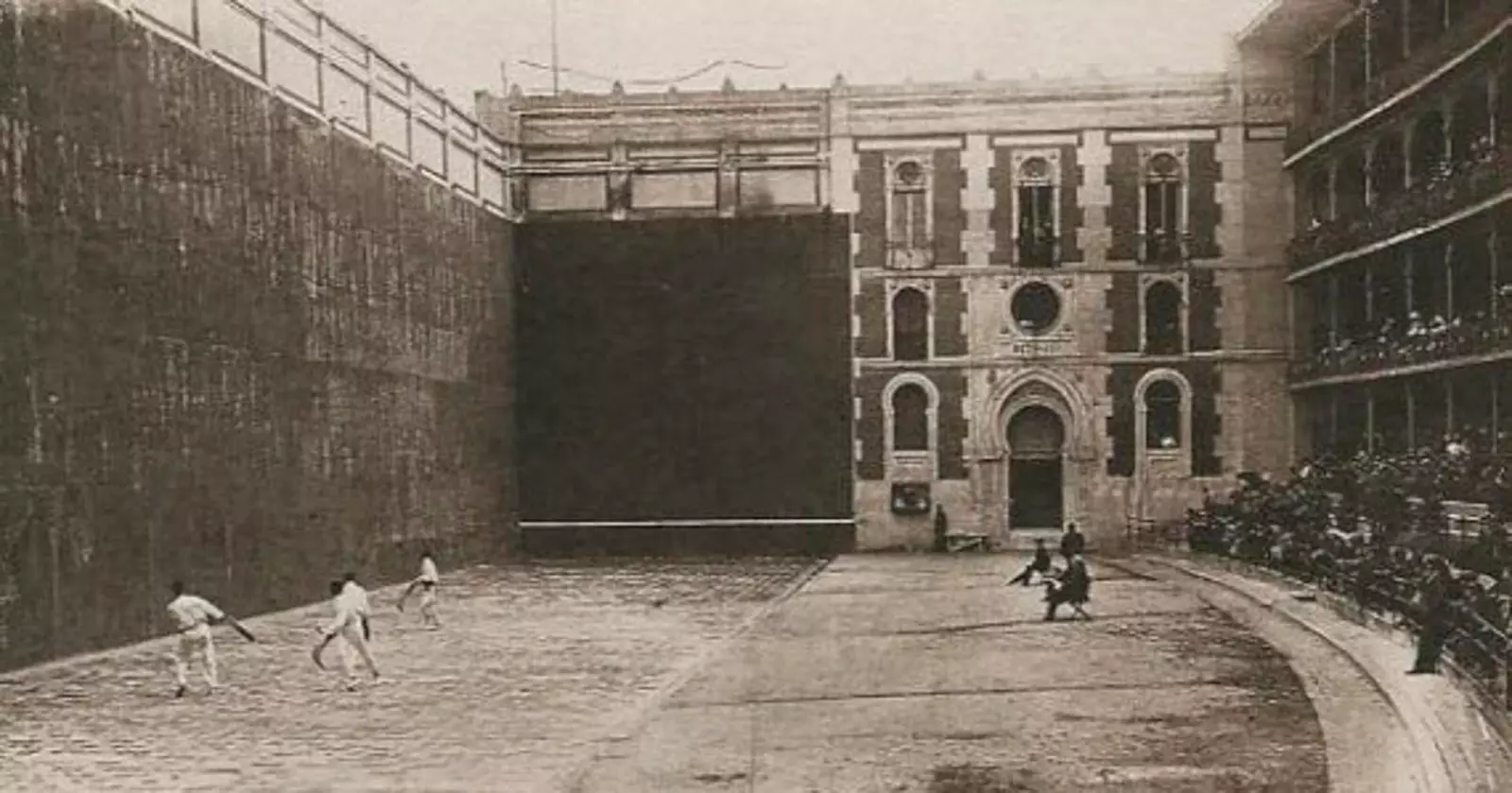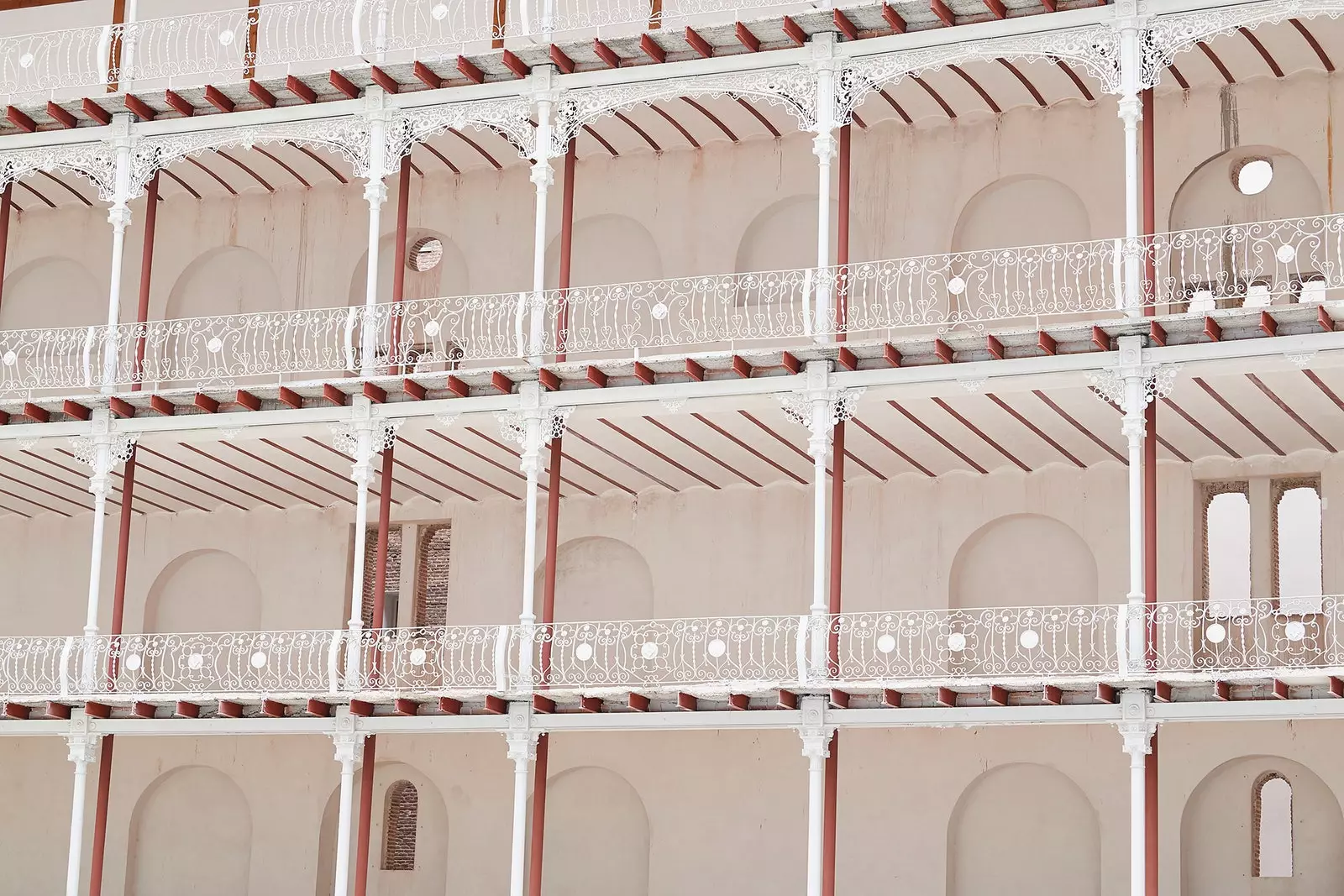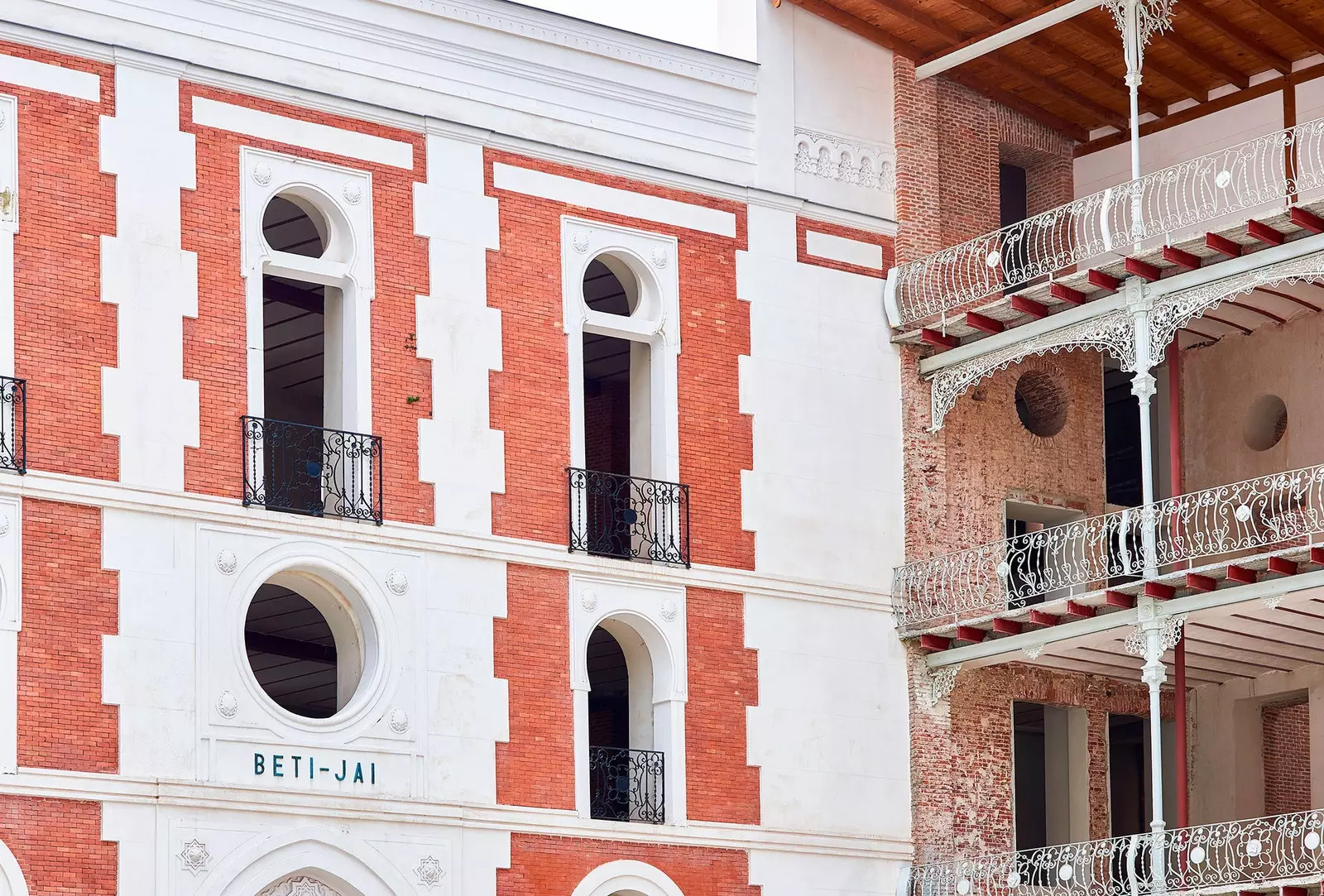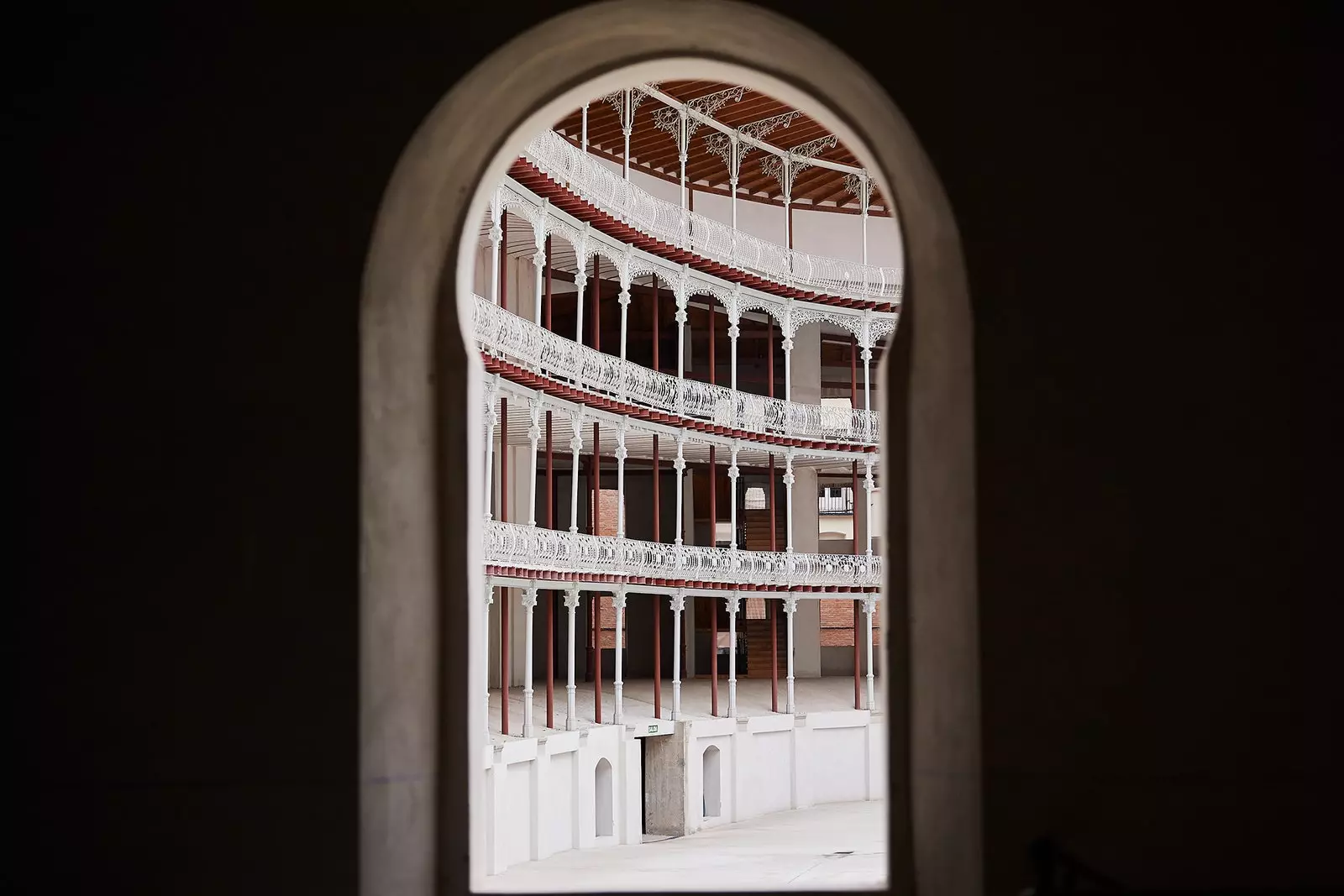
The Beti Jai Fronton is a surviving icon where time and space merge into the same space
when you enter Betty Jay, you think that at any moment a legion of camels and spice sellers will come to surround you. Until you recognize the laundry hanging in one of the neighboring buildings and remember that you never left Calle Marqués de Riscal, in the Chamberí neighbourhood. It is the magic of continuing to travel around Spain and the world without going beyond the Paseo de la Castellana.
enclosed within the Madrid Heritage collection that can be visited today exclusively with the Paseo Madrid initiative, the Frontón Beti Jai (Always party, in Basque) was once a Basque pelota paradise to become the best reflection of the Spanish history of the 20th century: from Citroën workshop to prison in the Civil War.
Today, the sum of all his memories gives an architectural jewel for the senses.

It was María Cristina de Habsburgo-Lorena who ordered the construction of several pediments in Madrid, among them the Beti Jai
THE CAPRICE OF MARÍA CRISTINA
The origin of the Frontón Beti Jai can be found in the first Spanish tourists and members of royalty influenced by foreign wonders. This was the case for Maria Christina of Habsburg-Lorraine, who after the death of her husband Alfonso XII in 1885, decided spend a vacation in San Sebastian, at that time the cornerstone of trips through Spain given its importance as a seaside resort. The city of La Concha was not only a benchmark for vapors and jets, but also the heart of the Basque ball game, which was very popular at the end of the 19th century.
Basque pelota, as many of you know, is a sport based on hitting a ball with your hand in front of a wall called 'frontis', either by two players or two couples. María Cristina was fascinated by this exotic sport, a reason that led her to order the construction of several Basque pelota courts in Madrid.
Enclaves that are now extinct, such as the pediment Jay Alai, in Alfonso XII street; Y Happy party, between the neighborhoods of Argüelles and Pozas, were some emblems of the time, although the jewel in the crown would be the Beti Jai Fronton. A project promoted by Jose Arana (whose initials appear on the exterior facade of the pediment) and designed by Joaquin Rucoba, artist in charge of the bullring of La Malagueta, under a budget of 500,000 pesetas.

A space halfway between a corrala in La Mancha and an old Arab citadel
The pediment began to be built in 1893 to be opened on May 29, 1894 between great joy and expectation given its characteristics: capacity for more than 4,000 people and an extension of 67 meters in which to give free rein to the new Basque pelota championships. However, the bets did not take long to reach this space until it became one of the main points of corruption in Madrid, reason why the Beti Jai it closed its doors in 1897. Thus would begin a new episode for this icon converted throughout the 20th century into the best mirror of the history of our country.
Between 1904 and 1906, the pediment was an experimentation workshop for the aviation sector and, shortly after, a Harley Davidson motorcycle workshop. It would also be conceived as olive and plaster warehouse, prison in the Civil War and concert center linked to the Spanish Falange in the postwar period, Citroën workshop and even polio vaccination center in the late 1960s.
After years abandoned, nature appropriated its entrails and the pediment passed from one hand to another until the Madrid City Council initiated a process of expropriation of the company Tarcosul Management, for which it invested 31 million euros, in addition to the 4.9 million to consolidate the reform.

The best reflection of the Spanish history of the 20th century: from the Citroën workshop to prison in the Civil War
In 2011, Beti Jai was named a Site of Cultural Interest (BIC) by the Community of Madrid and in 2015, the rehabilitation phase began, which would end on June 13, 2019.
VISITING A HERITAGE
Upon entering Beti Jai, one feels Alice in a Chamberí of Wonders. The brick curtain reveals the neomudejar style used in all those party spaces such as bullrings as it was the cheapest material of the time. In the lower part of the pediment rest the remains of the work wrapped in blue cloth and, there, when you imagine that nothing can surprise you, This space unfolds before you, halfway between a La Mancha corrala and an old Arab citadel.
You walk through history and the acoustics are such that for a moment you think that your questions to the guide will be heard even in Japan. So many voices for a pediment orphaned by spectators who visitors must lean out in small groups.
In order to preserve the pediment, The Madrid City Council enables through its web portal the visits organized by the Paseo Madrid program to discover the Beti Jai and other Heritage of Madrid. But it is not known until when.
In addition to the conservation factor, there are two other reasons that endanger the "tourist" future of Beti Jai: the entrances do not have emergency exits and the acoustics are a problem for the neighbors who live next to the pavilion's limits.

The sum of all his memories gives an architectural jewel for the senses
For now, visits are still scheduled for the months of July and September, while rumors about the future of this urban treasure float in the air: from a summer cinema and theater to a public square as an extension of urban life in Chamberí, walking past a concert hall. With cover, of course.
It is the destiny of the Beti Jai: to continue adapting to the whims of history.
